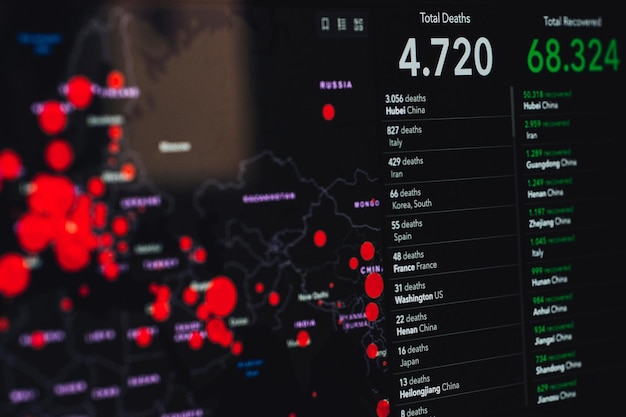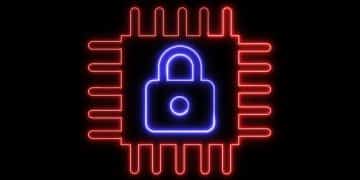Cybersecurity Threats to Entertainment Companies: Protecting Data

Entertainment companies face urgent cybersecurity threats necessitating robust measures to protect sensitive data, including intellectual property and customer information, from increasingly sophisticated cyberattacks.
The entertainment industry is a prime target for cyberattacks due to its valuable intellectual property and sensitive customer data. The urgency surrounding new cybersecurity threats targeting entertainment companies requires immediate and comprehensive measures to safeguard this information.
Understanding the Escalating Cybersecurity Threat Landscape
The cybersecurity landscape is constantly evolving, with new threats emerging regularly. For entertainment companies, this means staying vigilant and proactive in their defense strategies. The risks are significant and can lead to severe financial and reputational damage.
Common Types of Cyberattacks
Entertainment companies face a variety of cyber threats. Recognizing these threats is the first step in building a strong defense.
- Ransomware Attacks: Cybercriminals encrypt critical data and demand a ransom for its release.
- Data Breaches: Unauthorized access to sensitive information, such as customer data and intellectual property.
- Phishing Attacks: Deceptive emails or messages designed to trick employees into revealing confidential information.
- Insider Threats: Security breaches caused by employees, either intentionally or unintentionally.
These attacks can have devastating consequences, including financial losses, legal liabilities, and damage to brand reputation. Effective cybersecurity measures are essential to mitigate these risks.

Why Entertainment Companies Are Prime Targets
Several factors make entertainment companies attractive targets for cybercriminals. These include:
- Valuable Intellectual Property: Movies, TV shows, music, and other creative content are highly valuable and can be sold or leaked illegally.
- Sensitive Customer Data: Entertainment companies collect data from millions of customers, including payment information and personal details.
- High-Profile Targets: Successful cyberattacks can generate significant media attention, enhancing the reputation of cybercriminals.
The increasing sophistication of cyberattacks requires entertainment companies to continuously update their security measures and invest in advanced technologies to protect their assets.
In conclusion, understanding the types of cyberattacks and the reasons why entertainment companies are targeted is crucial for developing effective cybersecurity strategies. Vigilance and proactive measures are essential in this constantly evolving landscape.
Implementing Robust Cybersecurity Measures
To defend against these threats, entertainment companies must implement robust cybersecurity measures. A comprehensive approach that covers all aspects of the organization is essential.
Developing a Cybersecurity Strategy
A well-defined cybersecurity strategy is the foundation of a strong defense. This strategy should align with the organization’s overall business objectives and risk tolerance.
The strategy should include:
- Risk Assessment: Identifying and evaluating potential threats and vulnerabilities.
- Security Policies: Establishing clear guidelines and procedures for data protection.
- Incident Response Plan: Outlining steps to take in the event of a security breach.
Regularly reviewing and updating the cybersecurity strategy is crucial to keep pace with the evolving threat landscape. This ensures that the organization remains protected against new and emerging threats.
Key Security Technologies and Practices
In addition to a comprehensive strategy, entertainment companies should implement several key security technologies and practices.
These include:
- Firewalls: Acting as a barrier between the internal network and external threats.
- Intrusion Detection and Prevention Systems (IDS/IPS): Monitoring network traffic for suspicious activity and blocking potential attacks.
- Antivirus and Anti-Malware Software: Detecting and removing malicious software from systems.
- Data Encryption: Protecting sensitive data by converting it into an unreadable format.
Implementing these technologies can significantly enhance an entertainment company’s ability to detect and prevent cyberattacks.
In summary, implementing robust cybersecurity measures involves developing a comprehensive strategy and deploying key security technologies and practices. This proactive approach is essential for protecting valuable assets and maintaining a strong security posture.
Employee Training and Awareness Programs
Employees are often the weakest link in an organization’s cybersecurity defenses. Investing in employee training and awareness programs is crucial for reducing the risk of human error.

The Importance of Cybersecurity Awareness
Many cyberattacks are successful because employees fall for phishing scams or other deceptive tactics. Raising awareness about these threats can significantly reduce the likelihood of a successful attack.
Training programs should cover:
- Identifying Phishing Emails: Recognizing the signs of a phishing email, such as suspicious links or urgent requests.
- Password Security: Creating strong, unique passwords and avoiding common mistakes, like reusing passwords across multiple accounts.
- Safe Web Browsing: Avoiding suspicious websites and downloads that could contain malware.
- Social Engineering: Understanding how cybercriminals manipulate individuals into revealing confidential information.
Regular training sessions and simulated phishing attacks can help reinforce these concepts and keep employees vigilant.
Creating a Security-Conscious Culture
In addition to formal training, entertainment companies should foster a security-conscious culture where employees understand their role in protecting sensitive information.
This can be achieved by:
- Promoting Open Communication: Encouraging employees to report suspicious activity without fear of reprisal.
- Leading by Example: Senior management demonstrating a commitment to security best practices.
- Providing Ongoing Education: Keeping employees informed about the latest threats and security measures.
By creating a culture of security awareness, entertainment companies can empower employees to become a valuable line of defense against cyberattacks.
In conclusion, employee training and awareness programs are essential for reducing the risk of human error and building a strong security culture. A well-informed and vigilant workforce can significantly enhance an entertainment company’s overall cybersecurity posture.
Protecting Intellectual Property in the Digital Age
Intellectual property (IP) is the lifeblood of the entertainment industry. Protecting this valuable asset in the digital age requires a multi-faceted approach.
Digital Rights Management (DRM) Technologies
Digital Rights Management (DRM) technologies are designed to control access to and usage of digital content. While DRM can be effective, it is not foolproof.
Common DRM technologies include:
- Encryption: Protecting digital content by scrambling it into an unreadable format.
- Watermarking: Embedding unique identifiers into digital content to trace unauthorized distribution.
- Access Controls: Limiting who can access digital content and how they can use it.
DRM can help prevent unauthorized copying and distribution, but it can also be bypassed by determined cybercriminals. It also adds complexity and cost to the distribution process. As such, it’s become increasingly unpopular with end-users.
Content Monitoring and Anti-Piracy Measures
In addition to DRM, entertainment companies should actively monitor the internet for unauthorized distribution of their content. Anti-piracy measures can help identify and remove illegal copies of movies, TV shows, and music.
These measures include:
- Copyright Enforcement: Sending takedown notices to websites and online platforms hosting infringing content.
- Legal Action: Pursuing legal action against individuals and organizations engaged in large-scale piracy.
- Content Identification Technologies: Using automated tools to identify and track unauthorized copies of content.
Proactive content monitoring and anti-piracy measures can help minimize the financial losses associated with intellectual property theft.
In summary, protecting intellectual property in the digital age requires a combination of DRM technologies, content monitoring, and anti-piracy measures. Regular monitoring and enforcement are essential to minimize the impact of IP theft.
Data Loss Prevention (DLP) Strategies
Data Loss Prevention (DLP) strategies are designed to prevent sensitive information from leaving the organization’s control. These strategies are crucial for protecting customer data, financial information, and other confidential assets.
Implementing DLP Technologies
DLP technologies can monitor network traffic, email communications, and file transfers to detect and prevent the unauthorized transmission of sensitive data.
Creating Data Loss Prevention Policies
Entertainment companies should establish Data Loss Prevention policies that outline the types of data that must be protected and the measures that must be taken to prevent its loss.
Policies should also cover:
- Data Classification: Categorizing data based on its sensitivity and implementing appropriate security controls.
- Access Controls: Limiting access to sensitive data based on job role and need-to-know principles.
- Data Encryption: Encrypting data at rest and in transit to protect it from unauthorized access.
Regularly reviewing and updating DLP policies is essential to ensure that they remain effective in the face of evolving threats.
In summary, Data Loss Prevention strategies are essential for protecting sensitive information and preventing data breaches. Implementing DLP technologies and creating robust DLP policies can significantly reduce the risk of data loss.
Incident Response and Disaster Recovery Planning
Despite the best security measures, cyberattacks can still occur. Having a well-defined incident response and disaster recovery plan is crucial for minimizing the impact of a security breach.
Developing an Incident Response Plan
An incident response plan outlines the steps to take in the event of a security incident. This plan should include:
- Incident Identification: Determining whether a security incident has occurred and assessing its scope.
- Containment: Isolating the affected systems to prevent further damage.
- Eradication: Removing the threat from the affected systems.
- Recovery: Restoring the affected systems to normal operation.
Regularly testing and updating the incident response plan is essential to ensure that it remains effective in the face of evolving threats.
Disaster Recovery Strategies
Disaster recovery strategies are designed to ensure that business operations can continue in the event of a major disruption, such as a cyberattack or natural disaster.
For entertainment companies, this can be achieved by:
- Data Backup and Recovery: Creating regular backups of critical data and storing them in a secure location and ensuring that data can be quickly restored in the event of a disruption.
- Redundant Systems: Implementing redundant systems to ensure that critical services remain available even if one system fails.
- Business Continuity Planning: Developing a plan to ensure that business operations can continue in the event of a major disruption.
In conclusion, incident response and disaster recovery planning are essential for minimizing the impact of a security breach and ensuring business continuity. A well-defined and tested plan can help entertainment companies recover quickly and minimize disruptions.
| Key Point | Brief Description |
|---|---|
| 🚨 Urgent Threats | Entertainment firms are primary targets for cyberattacks. |
| 🛡️ Cybersecurity Measures | Robust strategies, key technologies, and constant vigilance are essential. |
| 🧑💻 Employees Training | Awareness programs reduce human error risks. |
| 🔑 IP Protection | Content, constant monitoring, and anti-piracy initiatives are crucial. |
Frequently Asked Questions
▼
Entertainment companies hold vast amounts of valuable intellectual property and sensitive customer data, making them attractive targets for cybercriminals seeking financial gain or notoriety.
▼
Essential measures include implementing robust cybersecurity strategies, deploying firewalls and anti-malware software, encrypting sensitive data, and training employees to recognize and avoid phishing scams.





